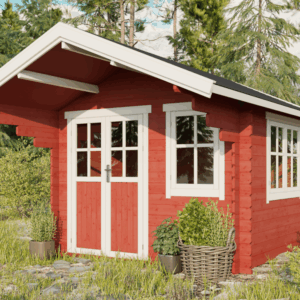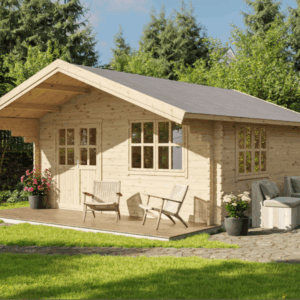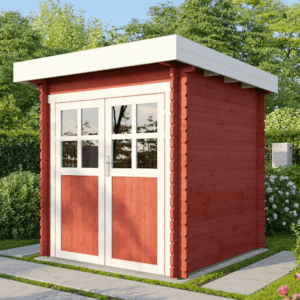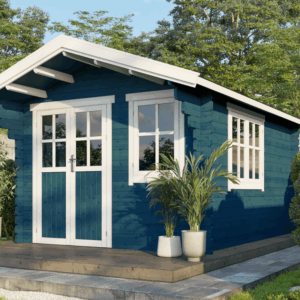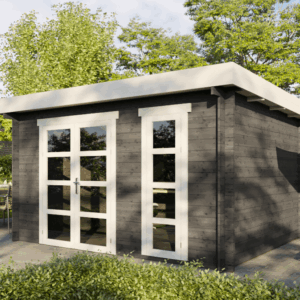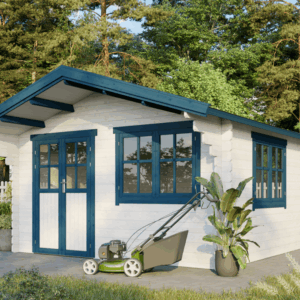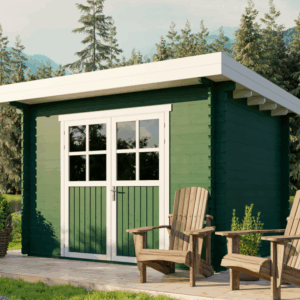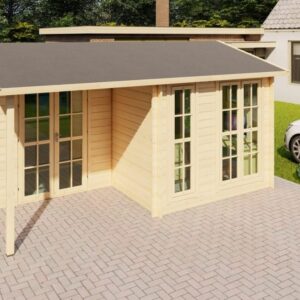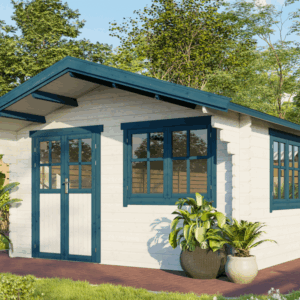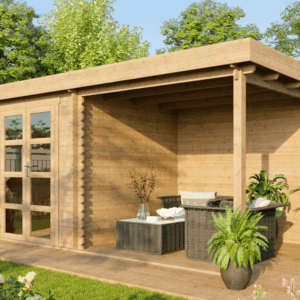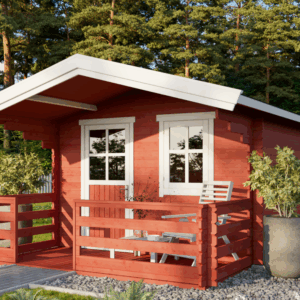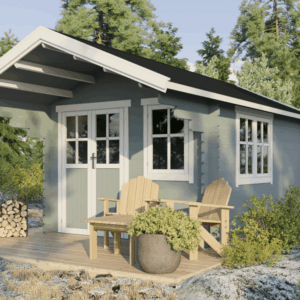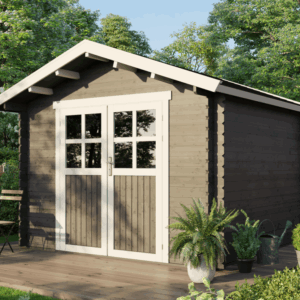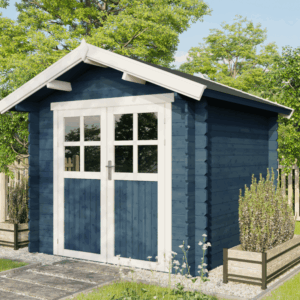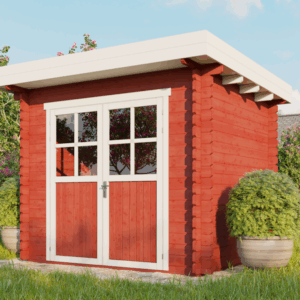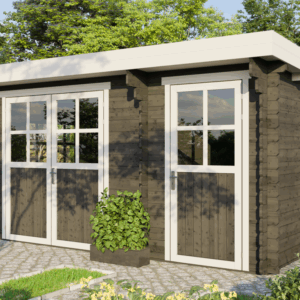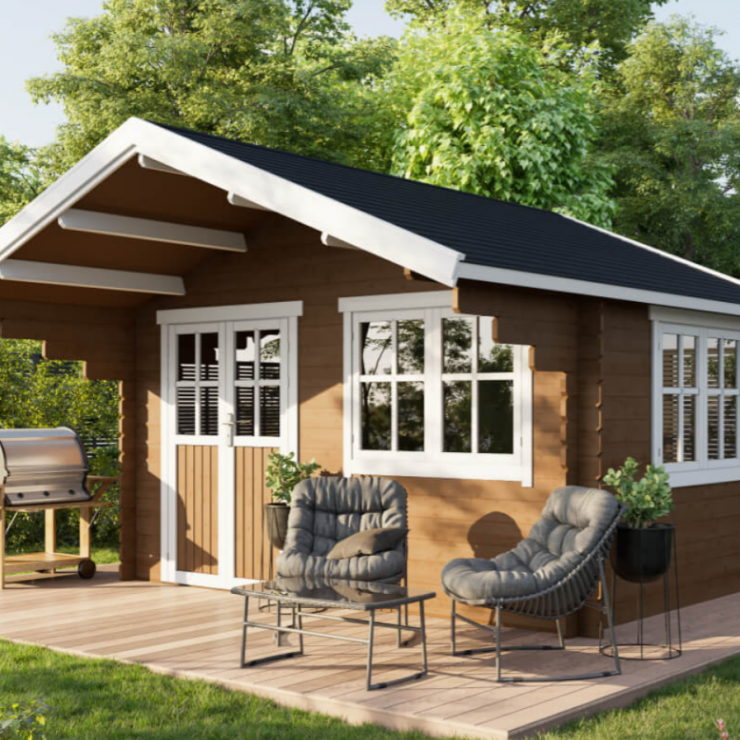The allure of a log house often conjures images of rustic cabins nestled in dense forests, built from sturdy timber. However, when we introduce “cork” into the equation, a new and exciting dimension of sustainable and aesthetically pleasing construction emerges. A log house built with cork, or incorporating cork in its design, represents a fascinating intersection of traditional building methods and cutting-edge eco-innovation. This post will delve into the world of cork log homes, exploring their unique benefits, construction possibilities, and why they are a compelling choice for the environmentally conscious homeowner.
Cork, derived from the bark of the cork oak tree, is a material renowned for its remarkable properties. It’s lightweight, waterproof, fire-resistant, and an excellent insulator, making it surprisingly suitable for building applications. When envisioned as a component of a log house, cork offers a departure from conventional wood, introducing a natural texture and an unparalleled commitment to sustainability. The idea of a log structure built entirely or partially from cork might seem unconventional, but its inherent advantages make it a truly innovative approach to home construction.
The growing awareness around climate change and the desire for sustainable living have propelled natural building materials into the spotlight. Cork, with its renewable and biodegradable nature, perfectly aligns with these modern aspirations. It’s a material that doesn’t harm the tree during harvesting, as the bark regenerates over time, making it one of nature’s most eco-friendly resources. Exploring the possibilities of cork in log house construction opens up a world of possibilities for creating beautiful, healthy, and environmentally responsible homes.
The Unique Advantages of Cork in Log House Construction
One of the most compelling reasons to consider cork for your log house is its exceptional thermal insulation properties. Unlike traditional wood logs, cork’s cellular structure contains millions of air-filled pockets, which significantly reduces heat transfer. This means a cork log house will naturally stay warmer in winter and cooler in summer, leading to reduced energy consumption for heating and cooling. This inherent insulation capability translates directly into lower utility bills and a more comfortable living environment year-round.
Beyond its thermal benefits, cork boasts impressive acoustic insulation qualities. The same cellular structure that traps air for thermal regulation also effectively absorbs sound. This makes a cork log house a remarkably quiet sanctuary, minimizing external noise pollution and creating a peaceful interior atmosphere. Imagine the tranquility of living in a home that naturally muffles the sounds of the outside world, allowing for greater relaxation and well-being.
The natural water resistance of cork is another significant advantage, especially in a log house application where moisture management is crucial. Cork’s waxy substance, suberin, acts as a natural barrier against water penetration, reducing the risk of rot and mold. This inherent protection can extend the lifespan of the log house and minimize the need for constant maintenance often associated with traditional timber structures. Its ability to repel water also contributes to a healthier indoor environment by preventing the growth of mold and mildew.
Furthermore, cork is a remarkably sustainable and renewable resource. The cork oak tree can be harvested for its bark every nine to twelve years without harming the tree itself. This regenerative harvesting process makes cork an environmentally responsible choice, contributing to forest conservation and biodiversity. Choosing cork for your log house construction actively supports sustainable forestry practices and reduces your carbon footprint compared to materials that require extensive deforestation.
The inherent fire resistance of cork is a safety feature that should not be overlooked. Cork’s cellular structure contains a high percentage of air, which makes it difficult to ignite and slows down the combustion process. When exposed to flame, cork chars rather than burns rapidly, releasing very little smoke. This characteristic adds an extra layer of safety to your log house, providing peace of mind for you and your family.
Exploring the Design and Construction of Cork Log Houses
While the idea of an entire log house constructed from solid cork logs might be a novel concept, the reality of incorporating cork into log house design is far more accessible. One popular approach involves using cork as an insulating layer or exterior cladding on a traditional log structure. This method allows you to retain the classic log aesthetic while significantly enhancing the home’s energy efficiency and comfort.
Another exciting possibility is the use of engineered cork products in log house construction. These innovative materials can be manufactured into various shapes and sizes, including structural elements that mimic the appearance of traditional logs. This opens up avenues for creating log-style homes with the superior performance characteristics of cork, offering a modern and sustainable alternative to conventional timber.
The aesthetic appeal of cork is undeniable, offering a warm, earthy, and natural look that complements the rustic charm of a log house. Its unique texture and natural variations in color create a visually captivating interior and exterior. Cork can be finished in various ways, from a natural matte appearance to a more polished sheen, allowing for a high degree of customization to suit your personal style.
When considering the construction of a cork log house, it’s essential to partner with experienced architects and builders who understand the unique properties of cork. They can guide you through the design process, ensuring that the structural integrity and aesthetic goals are met while maximizing the benefits of cork as a building material. Their expertise will be invaluable in navigating the technical aspects of integrating cork into your log home project.
Cork as an Insulating Cladding
One of the most practical and widely adopted methods of incorporating cork into log homes is through its use as an exterior cladding. Large cork panels can be affixed to the exterior of a traditional log wall, effectively creating a highly efficient thermal and acoustic barrier. This approach provides the visual appeal of a log house while significantly boosting its performance against the elements, reducing energy costs and enhancing occupant comfort.
This method offers a fantastic compromise for those who love the look of a log house but are concerned about the potential for heat loss or the need for extensive maintenance. The cork cladding acts as a protective shield, safeguarding the underlying logs from weather damage and further improving the overall insulation value of the wall. It’s a solution that marries traditional aesthetics with modern sustainable building technology.
Engineered Cork for Structural Applications
The innovation in cork materials has led to the development of engineered cork products that are strong and durable enough for structural applications. These products can be manufactured to resemble the dimensions and appearance of traditional timber logs, allowing for the construction of log-style homes where the primary structural elements are made from high-performance cork composites. This represents a truly cutting-edge approach to eco-friendly home building.
These engineered cork “logs” offer all the inherent benefits of natural cork – insulation, water resistance, fire retardancy, and sustainability – in a form factor that aligns with the classic log house aesthetic. This allows for the creation of homes that are not only visually appealing but also exceptionally sustainable and energy-efficient, pushing the boundaries of what is possible in eco-construction.
Real-World Examples and Inspiration
While dedicated “cork log houses” built entirely from massive cork logs might still be a niche, the use of cork as a high-performance building material in residential construction is steadily growing. You’ll find numerous examples of homes that incorporate cork cladding for its insulation and aesthetic benefits, often seamlessly integrated with other natural building materials. These projects showcase the versatility and beauty of cork in creating contemporary and sustainable living spaces.
Architectural firms and eco-builders are increasingly exploring cork’s potential, leading to stunning residential designs that prioritize both form and function. These projects serve as valuable inspiration, demonstrating how cork can be used not just for insulation but also as a key design element, adding a unique texture and warmth to the overall structure. The increasing adoption of cork in such projects is a testament to its growing recognition as a premier sustainable building material.
Imagine homes that not only reduce their environmental impact but also offer a healthier and more comfortable living environment for their occupants. The growing number of innovative projects featuring cork in various capacities, from insulation panels to decorative finishes, provides tangible evidence of its potential. These real-world applications offer a glimpse into the future of sustainable and aesthetically pleasing architecture, where cork plays a pivotal role.
Maintaining Your Cork Log House
The maintenance requirements for a cork log house are generally less demanding than those for traditional timber log homes, thanks to cork’s natural resilience. Regular cleaning with mild soap and water is usually sufficient to keep the exterior looking its best. Avoiding abrasive cleaners or high-pressure washing will help preserve the integrity and natural appearance of the cork.
For homes that utilize cork as an exterior cladding, periodic inspections for any signs of wear or damage are recommended, though such issues are less common with cork than with untreated wood. Any minor repairs can typically be addressed with readily available cork-based sealants or repair kits, ensuring the longevity and continued performance of your home’s protective layer. The inherent resistance of cork to rot and pests further simplifies maintenance routines.
If your cork log house features interior cork elements, such as flooring or wall panels, maintaining these surfaces is also straightforward. Depending on the finish, regular sweeping or vacuuming and occasional damp mopping will keep them looking pristine. Protecting cork surfaces from excessive moisture and direct sunlight can help to prolong their lifespan and maintain their aesthetic appeal over time.
The beauty of cork lies in its low-maintenance nature, allowing you more time to enjoy your beautiful and eco-friendly home. By following simple care guidelines, you can ensure that your cork log house remains a stunning and sustainable dwelling for years to come. The minimal upkeep required is a significant advantage, freeing homeowners from the constant attention that traditional log homes often demand.
Is a Cork Log House the Right Choice for You?
Deciding whether a cork log house is the right choice involves weighing its unique advantages against your personal priorities and budget. If sustainability, energy efficiency, and a desire for a natural and healthy living environment are paramount, then a cork log house is certainly worth serious consideration. The long-term savings on energy bills and the reduced environmental impact are compelling arguments.
The aesthetic appeal of a log house, combined with the innovative and eco-friendly properties of cork, creates a truly distinctive living experience. The natural beauty and inherent performance benefits of cork can elevate a traditional log home concept into something truly special and forward-thinking. It’s an opportunity to build a home that not only shelters you but also reflects your commitment to a greener future.
While the initial investment for specialized eco-friendly materials might be higher in some cases, the long-term benefits of a cork log house, including reduced energy costs, lower maintenance, and a healthier living environment, often make it a wise and cost-effective investment over the life of the home. It’s a choice that prioritizes both your well-being and the health of the planet.
Ultimately, a cork log house offers a unique blend of timeless charm and modern sustainability. It’s a testament to how innovative materials can be integrated with traditional building principles to create homes that are beautiful, functional, and environmentally responsible. Exploring the possibilities of cork in log house construction is an exciting journey into the future of eco-conscious living, offering a sanctuary that is as kind to the earth as it is to its inhabitants.
“`

